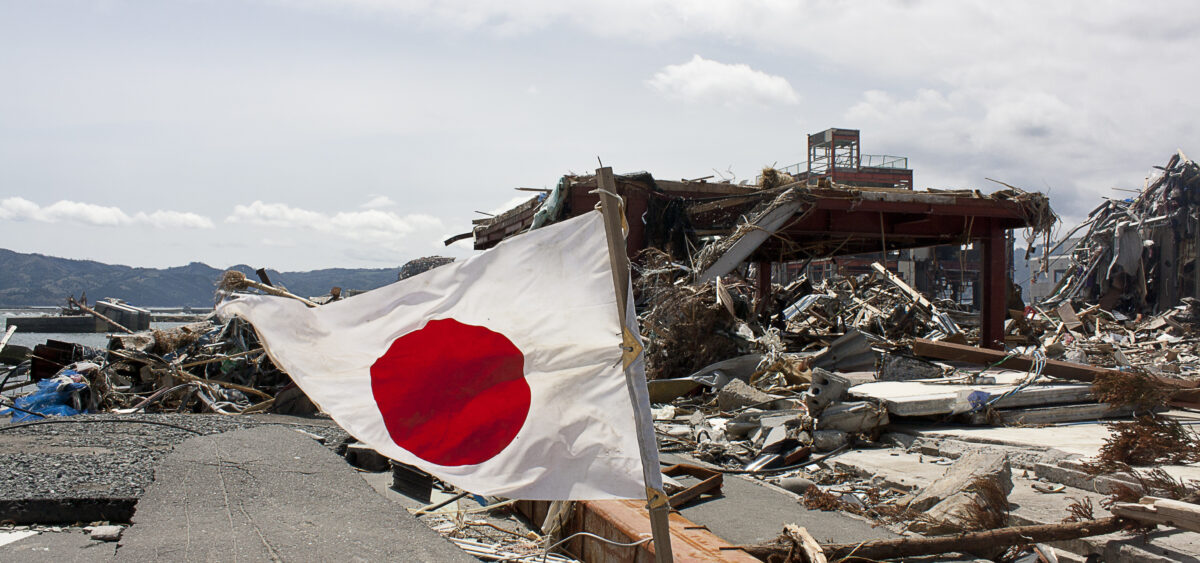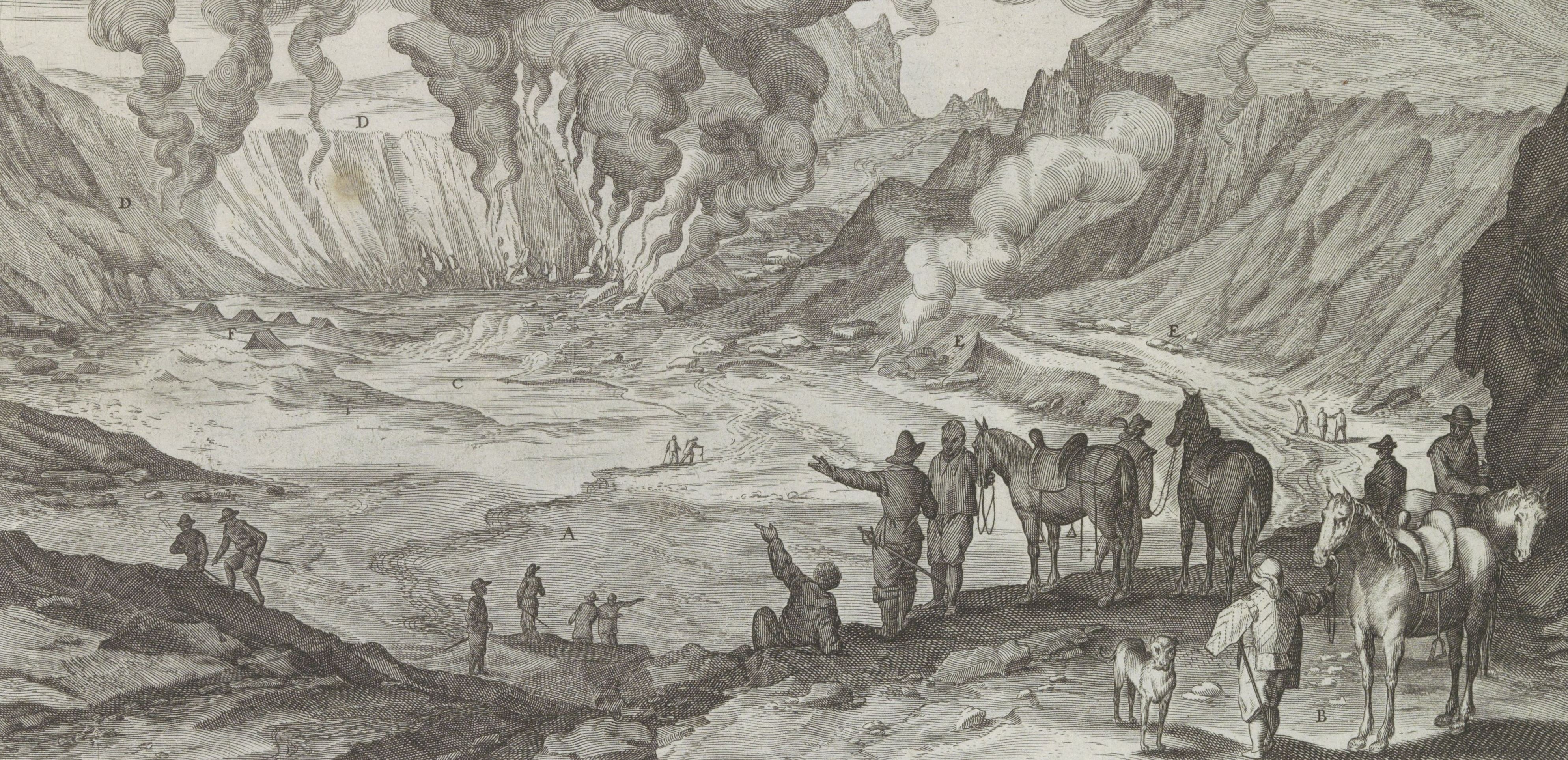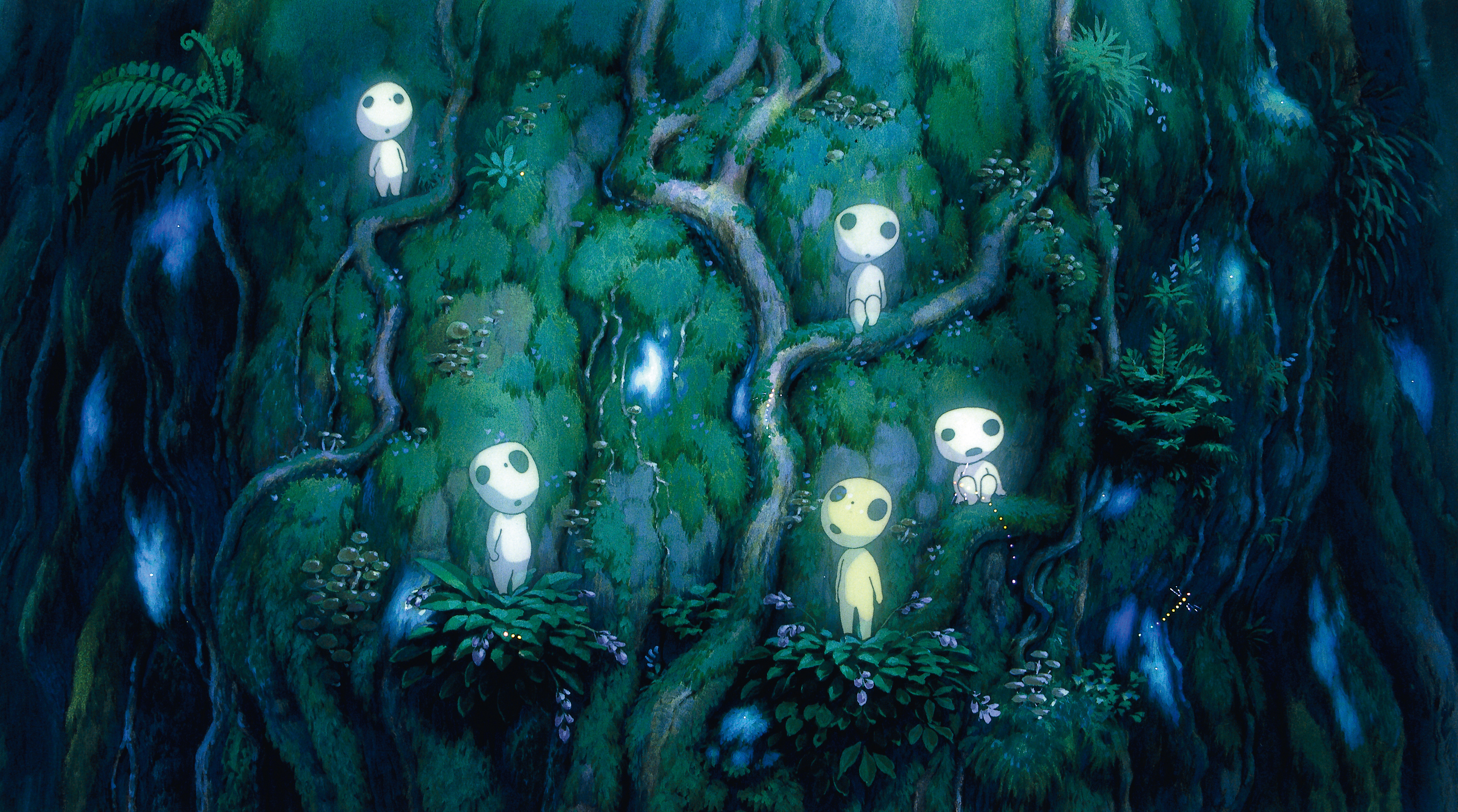
On 11th March 2011 at 2.45pm, Kenta was cleaning the rust from some metal moulds. Yasuo Takamatsu was leaving the hospital with his mother-in-law. The monk Kaneta was sitting in his temple in the city of Kurihara. And Mr. Teiichi was doing some shopping at an office supplies store.
The ground shook a minute later. As a result of the earthquake, Honshu, the largest island in Japan, shifted by 2.4 metres in the direction of America. The Earth’s axis shifted as well, by 10 centimetres, which accelerated its rotation. The day became shorter by 1.8 microseconds.
The ground shook for six minutes.
From his father’s workshop, Kenta managed to run 300 metres to his house on top of the hill, grab his grandmother and run outside with her. A moment later, the wooden altar with Shinto gods crashed to the floor, in the very spot they had just escaped from.
Yakuo Takamatsu and his mother-in-law ran out to open ground.
The monk Kaneta went to the upper floor of the temple, where all the books fell out of the shelves. He picked up the volume that lay on the very top of the pile. It was The Limits to Growth published by the Club of Rome.
And Mr. Teiichi ran through the cardboard boxes and bubble wrap into the street. He saw cracks in the street which were being filled by water.
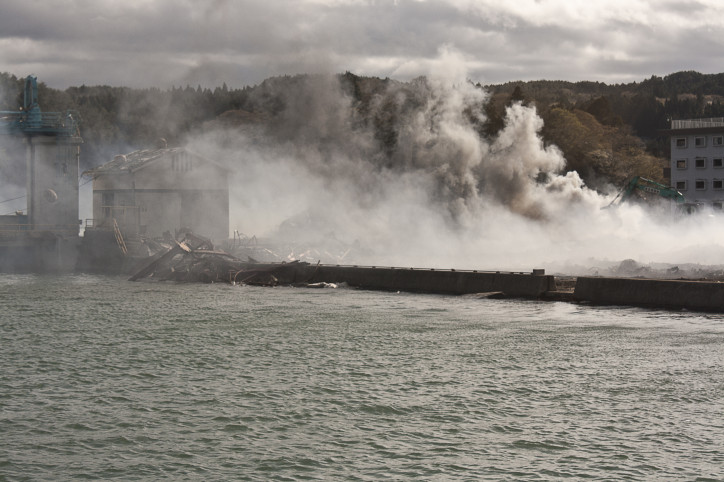
Tōhoku, 2011 r., zdjęcie: Daniel Pierce/Flickr (CC BY 2.0)
I don’t remember how and when I found out about the earthquake in Japan. It happened at 6.46am CET, so I was surely asleep. But I do remember later pictures of the swollen sea that poured over the walls and ripped houses from their foundations. I recall seeing the cars trying to escape from the giant wave. I was learning some new names. Tõhoku – the northern part of the island of Honshu. Miyagi, Iwate, Fukushima – the three hardest hit prefectures. And then I remembered the words: core, reactor, iodine. I remember how tense I was as I waited to find out whether they were able to contain the blasts at the Fukushima Daiichi nuclear plant.
And how terrified I was when I saw the white smoke cloud hovering above reactor no. 1.
I thought that the picture of the Japanese woman, sitting among overturned cars, broken planks and gutted furniture said it all. Mountain of debris covered in sludge blocking the horizon. The woman took off her galoshes. Her bare feet were touching the wet grass. She pulled her bare legs up to her chin. She was crying.
I thought that nothing more could be said.
It wasn’t until 2014 that I understood things were different. I read in The Japan Times that of the 310,000 people evacuated in 2011, nearly 179,000 were still living in temporary complexes. This was accompanied by a photo: rows of identical sheet metal barracks with identical narrow asphalt streets running between them. I read about older people who couldn’t find their way home for hours. And that they weren’t able to recognize their house, even when they were standing in front of it. I read about thin corrugated metal walls that you can hear your neighbour through. And that would freeze in the winter and heat up in the summer. People would joke that you could fry eggs on the roof.
I needed a while to understand all that. In 2014, three years after the tsunami, 179,000 Japanese people, citizens of one of the wealthiest and most technologically advanced countries in the world, were living in containers. Which were, incidentally, certified until 2013.
The temporary housing was expired.
Also in 2014, the government announced a success. The process of removing the sludge and mud was 100% complete (in the Miyagi and Iwate prefectures). The process of cleaning up the post-tsunami debris was 100% complete (in the Miyagi and Iwate prefectures). And the situation in Fukushima was under control (as Prime Minister Shinzo Abe assured everyone even a year earlier, when Tokyo joined the race to organize the Olympic games).
For me, it was just the beginning.
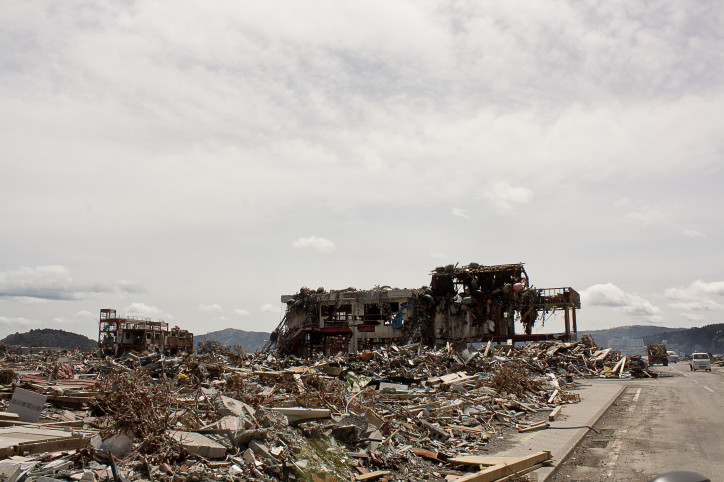
Tōhoku, 2011 r., zdjęcie: Daniel Pierce/Flickr (CC BY 2.0)
Four years after the tsunami, I met Kenta Satō, Yasuo Takamatsu, Taio Kaneta, Teiichi Satō, and many, many others. They have become a permanent part of my life. My head is filled with memories that are not mine. Of a mother who lost two children. A son who didn’t manage to hold his mother’s hand. A man who stayed in the contaminated zone to take care of abandoned animals. A father who continues to scour a radioactive beach for his daughter’s remains. A grandmother who a week after the tsunami started to produce a local delicacy in a provisional shack.
Each of these people had a different way of coping with what the tsunami brought them.
Kenta took action.
Kaneta listened.
Teiichi wrote.
Takamatsu went diving.
The wave
“Fifth anniversary or tenth anniversary – these dates mean nothing to me. I can’t forget even if I wanted to. So what if it’s been ten years already? I still haven’t found her body.”
The tsunami captured Yuko Takamatsu, Yasuo’s wife, from the roof of the bank in Onagawa, a small town in Miyagi prefecture. The warnings issued through the megaphone reported a six-metre wave. Six metres? It won’t even reach the second floor. If it’ll come at all. Two days earlier, they also had an earthquake; true, it was smaller, but there was supposed to be a tsunami, and the water level rose by a mere five centimetres. Yuko and the others climbed up onto the roof.
The wave in Onagawa was 15 metres high. A total of 827 residents were killed.
All in all, the tsunami took the lives of 15,899 people.
But Yuko Takamatsu is one of the 2529 people who have still not been declared as dead. Her body was not found.
Yasuo Takamatsu looks for Yuko every weekend. He puts on a dry wetsuit and together with his buddy, Masaki Narita (who is looking for his daughter’s bones), he dives into the water.
The last message Yasuo received from Yuko was: “I want to go home.” He started looking right after the tsunami. First in all the hospitals. Then in the debris on the coast. Three months later, the Japanese Self-Defense Forces found Yuko’s phone. Yasuo dried it out and placed it on a shelf. When he switched it on, an unsent message appeared on the screen: “The tsunami is enormous.”
Towards the end of 2013, Yasuo took a course in diving. When I spoke with him, he talked about the notebooks, photographs and animal bones that were underwater. He thought that they would finish searching the bay near Onagawa in two, maybe three years. That’s what his instructor said.
It’s been six years since we met. During that period, even more stories were written about Yasuo, and even a film called I Want to Go Home was made. His daughter returned to the city and gave birth to a son. Yasuo looks after his grandson twice a week. “It’s not that I don’t feel that time has passed. Yes, it’s been ten years. But it doesn’t mean anything to me,” he says.
Yasuo and Masaki haven’t stopped searching the bay. They aren’t allowed to dive in certain areas, such as shipping routes. But they return numerous times to other places. They dive deeper and deeper.
Yasuo says that the underwater landscape has changed over the past six years. The Pacific Ocean bottom is muddier and more polluted. He doesn’t find small objects anymore; only cars, fishing nets and lines. He notifies the police if he finds something identifiable, like a number plate.
“You still hear stories about bones found on the damaged coast. That means that the chances of finding my wife’s bones are greater than zero,” he believes.
In 2021, Yasuo is still searching.
To the question of how long bereavement lasts, his answer is: as long as it has to.
Bereavement does not mean closing one stage and moving on to another. It’s a maze in which we constantly stumble upon each other. And time and again, we learn to accept our reality, stand back on our feet, find meaning and build relationships. With the deceased as well.
The last time bones were found was in October 2019, at least according to newspaper reports. A chin bone and fragment of a tooth got tangled into fishing nets in the city of Watari. Nippon.com wrote that the victim was 27-year-old Maki Okubo, an employee of the local driving school, who died on 11th March 2011. The newspaper quotes the words of Maki’s mother: “I want to tell the bereaved families of missing victims not to give up.”
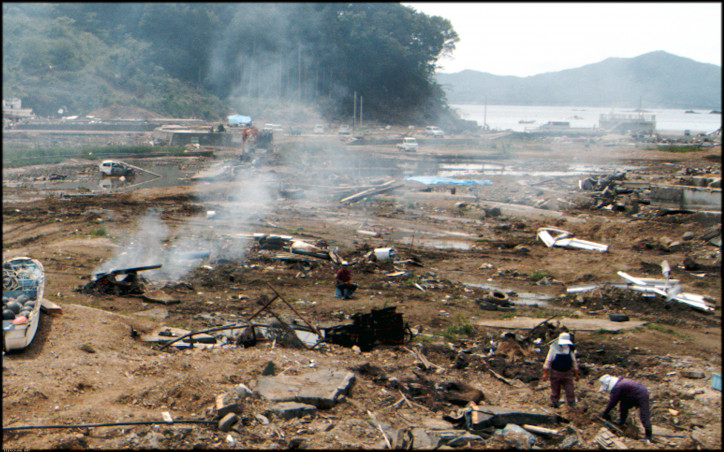
Tōhoku, 2011 r., zdjęcie: Stan Chow/Flickr (CC BY 2.0)
Tsunami remains are still being found not only in Japan, but all over the world. At the end of 2020, a fishing boat with crabs swimming in it was found 300 kilometres south of Tokyo. It originally came from Kesennuma (1152 fatalities, 214 people missing). Specialists speaking for the Mainichi Shimbun believe that the boat made it to the coast of North America, then travelled south to Southeast Asia, and finally north to the coast of Japan.
And although the search for tsunami victims is still on (61 policemen are scouring the coast of Fukushima prefecture), the phase of reconstruction will officially end on the last day of March 2021. It’s been 10 years since the government established the Reconstruction Agency in charge of the reconstruction of destroyed areas (with the exception of the contaminated zone around Fukushima, but I’ll get back to that later). From colourful brochures covered in fine print, I find out that 31 trillion yen (or around £210 billion) has been spent on the reconstruction of roads, houses and people’s lives since 2011. Railway lines (in their entirety) and roads (with a few small exceptions) have been rebuilt. Over 30 million tons of debris have been removed. 94% of farmland has been restored and 97% of fish processing plants have been rebuilt.
A total of 154,000 houses were built along with 30,000 municipal buildings. 18,000 houses were moved to higher ground.
42,000 people are still waiting to move into their own homes.
This includes as many as 2000 who still live in temporary housing.
If Tokyo hadn’t won the bid to host the Olympics, perhaps people in Tõhoku would have been able to move more quickly. But construction companies preferred to build stadiums rather than apartment buildings. That’s why I read about expired containers in 2014.
Throughout those few years of waiting, neighbours would get accustomed to each other and build communities. It was to those places that the monk Kaneta would go with his mobile cafe. He launched that right after the tsunami.
In his book published in January 2021 (The Great East Japan Earthquake 3.11, Between Life and Death), fragments of which he e-mailed to me, he writes that in a normal situation, the support offered by religious groups should not last more than two, maybe three years. Otherwise, people become dependent on the support, and it’s easier to convert them into followers. Kaneta refers to that as the colonization of hearts. He writes: “We made sure we were companions and not leaders. You have to start retreating at the right moment. Step by step.”
But with this catastrophe, nothing was normal. Kaneta didn’t even notice when five years went by. During that time, he regularly visited dozens of temporary housing complexes. He would bring tables, chairs, coffee, cake and a few other monks with him. Not always of the same school of Buddhism. Not always of the same faith. It wasn’t religion that mattered to Kaneta. He named his place Café de Monk.
Because he is a monk.
Because Monk is his favourite jazzman.
Because in Japanese, monku means ‘to complain’.
The monks would put on some music and listen to whatever people wanted to throw out of themselves.
“The first year, they would say nearly nothing. We used up a lot of tissue then. The second year, people started realizing what had happened. They couldn’t stop asking Why? Acceptance showed up in the third year. And in the fourth, laughter appeared,” Kaneta told me back in 2015. And added that he was afraid of the moment when they would all move. The community they had created would disappear. Everybody would go their own way. They’d have to start over again.
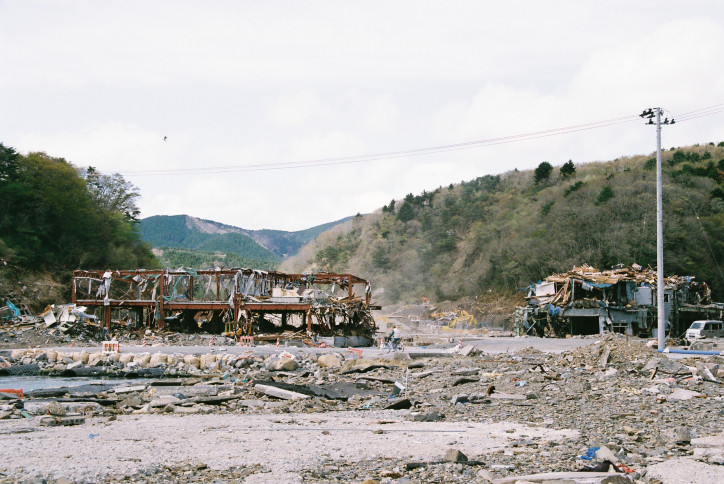
Tōhoku, 2011. Photo by Akinori Yamada/Flickr (CC BY 2.0)
Today, Kaneta knows what happened next. In an e-mail, he writes that the fifth year was marked by illness and an awareness of old age. Most of the young people, having decided not to wait for the government, moved to the city long ago. Talking over coffee at Café de Monk, people were complaining more and more about how they would never move out of these temp houses. At the end of the day, Kaneta would jokingly say: “Hey, no dying on me here! You don’t want to die in a provisional house, do you? Stay alive! I’ll be back soon.” They would nod their heads, laughing.
When they finally moved, each to a different municipal apartment building, it became indeed more difficult to make friends with a neighbour when separated from each other by a solid door rather than a thin wall. The monk Kaneta believes they moved into silence.
One of the men who would regularly come by Café de Monk to complain returned to the temporary complex several months after he had moved. He killed himself in the spot where they used to meet.
“Before the earthquake, 30,000 people a year would commit suicide in Japan,” Kaneta explains in his book. “They were linked to family, economic or institutional situations. It wasn’t a personal matter; rather, the problem was much broader. We were living in a lonely isolated society, without any ties. Before Café de Monk, my activity was aimed at efforts to prevent suicide. Did we succeed? Did we heed the silent call of 30,000 people each year? 300,000 over the course of ten years?”
The first page of the Reconstruction Agency brochure shows statistics, which instead of 15,899 fatalities report 19,729. And there’s a note in brackets: “Including fatalities associated with the catastrophe.” 3830 lives were taken not by the wave, but by sadness, deteriorating health and stress.
Japanese scientists confirm that in the regions affected by the catastrophe, the number of suicides over the last four years has increased, especially among men. The most extensive studies were conducted in Fukushima. An increase was observed right after the tsunami, and then a few years later when people could return to their homes. That’s when they discovered that what they had been waiting for would never be the same as before 2011.
Last year, the government decided not to dissolve the Reconstruction Agency (it was initially established for a period of 10 years). It is supposed to operate until at least 2031. It is now going into a second phase, which will focus on the development of community and mental support. The goal here is to build a New Tõhoku, better than the pre-2011 one, when most young people would flee to big cities.
It’s as if the tsunami was an opportunity to start over. This approach was already visible in 2015: plans for museums, giant festivals, local products. Tõhoku became fashionable; in 2019, the region was visited by 332% more foreign tourists than in 2010.
But the tsunami is something that cannot be forgotten.
Even if you really want to forget. The wall reminds you of events passed. Reaching average heights of 14 metres, and stretching over a total of 400 kilometres, the structure separates the land from the sea. The grey concrete wall, worth 1.35 trillion yen (nearly £9.1 billion), is meant to protect the inhabitants of Miyagi, Iwate and Fukushima from future tsunamis.
Most residents look at the grey wall and do not understand. The wall disrupts the natural tides of the sea. Fishermen worry about algae and oyster farms. They are losing contact with what their lives are all about. Besides, so many residential buildings were already relocated to higher ground at great cost.
The wall protects the rice fields.
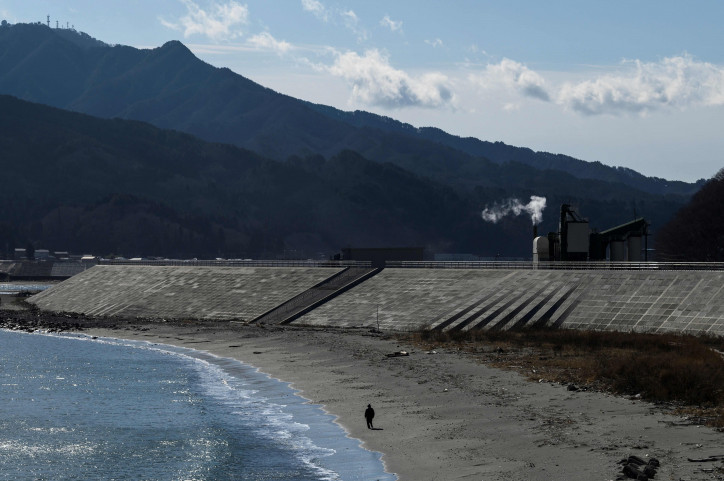
Mężczyzna spaceruje w pobliżu betonowej ściany w mieście Miyako, w prefekturze Miyagi, w lutym 2021 r. Zdjęcie: Charly Triballeau/AFP
The policies of the great reconstruction are undergoing heavy criticism. Many people feel that they focused on rebuilding the facade and didn’t bother to ask what the survivors of the tsunami really needed.
When a tsunami is coming, the sea suddenly starts to recede. Nobody will be able to see it from behind the wall.
The explosion
“Less people are concerned with the radioactivity level today. We can’t constantly be thinking about it, that’s no way to live. Yet vegetables with the Fukushima label are still cheaper than produce from other areas in Japan,” Kenta Satō writes. You just can’t forget about the contamination, just like you can’t forget about the tsunami.
Actually, there were two catastrophes on 11th March 2011. The tsunami killed over 15,000 people. It destroyed the coast of Tõhoku. It washed away everything in its path: houses, cars, people. But when the sea receded, taking away the dead, the catastrophe was over. Bereavement began.
Yet in Fukushima, the catastrophe persists.
And on several levels at that.
Because although the world associates the term Fukushima with the damaged power plant only, it is also the name of an entire prefecture, the third largest in Japan, with its capital being the city of Fukushima, which is 60 kilometres away from the Fukushima Daiichi power plant located on the coast and is separated from it by a mountain range.
The prefecture is still not able to cope with the radioactive label.
Thus the lower prices and the ban introduced by certain countries on the import of seafood from Fukushima.
Thus the independent centres for measuring radiation in food.
Thus the most demanding standards in the country.
But that’s only one side of the coin. Because contamination poisons not only the soil and food, but the mind as well. Families are breaking apart over a bowl of rice. Very often a mother will pack up her children and leave, somewhere where she doesn’t have to count becquerels. The father visits the family on weekends only. Akira Sugenoya, a surgeon and thyroid specialist who spent several years in Belarus treating children who went through Chernobyl, and the current mayor of Matsumoto (a town in the Japanese Alps where many former residents of Fukushima moved to), told me that radiation destroys not only genes, but also relations between people.
And then there’s the power plant itself and the contaminated areas around it. Contrary to what Prime Minister Abe said back in 2013, the situation is not under control at all. Indeed, rods with spent fuel have been removed from the pool in reactor no. 4 (not like the fuel in the core; rather, it’s used fuel that still needs to be cooled). Removal of the rods from reactor no. 3 started in 2019, while preparations for the operation took eight years. By 10th February 2021, 535 of the 566 rods had been removed, but the pools in reactors no. 1 and 2 haven’t even been touched yet. The operation was declared a great success, as if the intention was to divert attention from the fact that three damaged reactors still hold (no-one knows exactly where) melted fuel that constantly needs to be cooled with water. For a long time, robots going inside would break down after a short while. The radiation level was too high even for them. But all this is also presented as a success on the website of TEPCO, the owner of Fukushima Daiichi; an entire section is dedicated to new technologies. “Technologies allowing the removal of melted nuclear fuels don’t exist yet. But that’s OK, we’ll come up with a way,” were the words of Akira Ono, head of Fukushima Daiichi, when I visited the damaged power plant in 2015.
He also added that in 40 years, I’ll see a seaside park here with children playing.
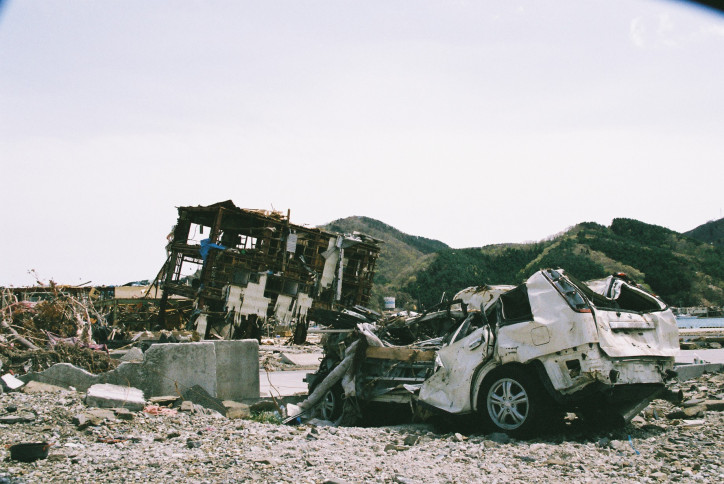
Tōhoku, 2011. Photo by Akinori Yamada/Flickr (CC BY 2.0)
When the earthquake damaged the power network that provided Fukushima Daiichi with electricity, and then the tsunami flooded the spare generators located in the basements and washed away tanks with spare fuel, the reactor lost its cooling system. The cores shut off automatically, but although the fission reaction was interrupted, without any cooling the cores started to melt. The battle to supply them with water lasted more than 12 hours.
On 12th March at 3.36pm, a hydrogen explosion destroyed the secondary safety shield in reactor no. 1.
On 14th March at 11.01am, a hydrogen explosion destroyed the secondary safety shield in reactor no. 3.
The situation wasn’t stabilized until 20th March, when fire engines could finally reach the power plant.
The catastrophe in Fukushima Daiichi received the maximum level 7 on the International Nuclear Event Scale.
Already during the first few days, all people living within 20 kilometres from the power plant were evacuated. Initially, the wind blew towards the ocean, but on 15th March, it changed direction. It started blowing northwest.
Iitate, the village where Kenta lives, is located in a range of 25 to 45 kilometres northwest of the power plant. Everybody thought that was sufficiently far. People from the towns located closest to the power plant were evacuated.
Nobody warned the people in Iitate that the snow which fell the night of 15th to 16th March was radioactive. The advanced SPEEDI system that assessed radiation levels indicated an alarming level, but the government decided that it was faulty.
People with Geiger counters showed up in Iitate. They warned people not to leave their houses. Or preferably, leave the village altogether. It was Kenta who started tweeting about how he’d been working in a radioactive environment, yet there was still no evacuation order. Children were playing near contaminated rivers, people were eating contaminated vegetables and drinking contaminated milk. They weren’t even given iodine.
The evacuation order wasn’t issued until 22nd April, nearly a month and a half later. The only people left in Iitate were 108 residents of the senior citizens’ home.
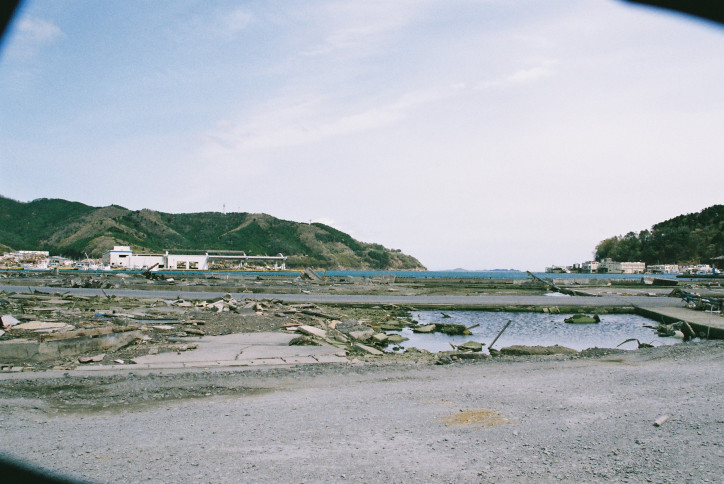
Tōhoku, 2011. Photo by Akinori Yamada/Flickr (CC BY 2.0)
Kenta felt that he had to talk about what had happened. It was his responsibility. He had been living right next to a nuclear power plant for 30 years and was never interested in the threats. After 11th March, he participated in conferences, gave interviews, organized workshops, recorded programmes. He gave presentations all over Japan. He went to Chernobyl. He wanted to build a museum in Fukushima where people would find out about the earthquake, tsunami and radiation.
I visited Iitate with him. Standing on the side of roads, in fields, everywhere were black bags filled with contaminated soil. The cleaning process involved washing the roadways and buildings, removing a few centimetres of the top layer of soil, packing it into bags and replacing it with new soil excavated from split open mountain slopes. Grass, leaves and branches were also thrown into the bags. Black bags became the visiting card of Fukushima prefecture. They made people realize one thing – contamination cannot be removed. It can only be moved to a different place.
The government has promised that by 2045, the contaminated soil will be moved to a permanent location somewhere outside of Fukushima. That location has not been specified to this day. The bags end up in temporary stores. And some of them are still standing somewhere at the side of the road. In 2019, Maxime Polleri described them for The Diplomat: “The bags are now starting to break down due to the build-up of gas released by rotten soil. Plants and flowers have also started to grow inside the bags, in the process tearing them apart.”
Behind Kenta’s house is a stretch of forest. Until 2011, Kenta would gather mushrooms and edible plants there. He would catch small silver fish in the river.
In 2015, a white tape hung between the tree trunks 20 metres behind the house.
“They’re not cleaning beyond that point,” Kenta said.
Already in 2015, the government declared that the process of cleaning part of the contaminated locations was completed. The evacuation order for Iitate was lifted (partially) in 2017. 1482 of the roughly 6000 inhabitants returned.
“In 2010, 30% of Iitate residents were 65 years and older,” Kenta writes. “The average for the country at that time was 22.8%. Today in Iitate, 70% of its residents are 65 years and older.”
The preschool, primary and middle schools were opened for about 100 pupils. But the high school remained closed. They don’t even have a supermarket in Iitate.
Although Kenta was elected to the local council and took over his father’s business located in Iitate after he had died, he does not live there. He moved to the capital of the prefecture. He prefers to have his children grow up in the city. But when he brings them here for a visit, he never allows them to play in the woods.
“One thing I know for sure. Our life has changed. And there’s no going back to the old one.”
Yet the monk Kaneta has his doubts as to whether people realize that. He writes that the decision has just been made to recommission the nuclear power plant in Onagawa, the one which was nearly destroyed by the tsunami.
“It makes me absolutely mad. After all, none of the issues of Fukushima Daiichi have been resolved,” he said.
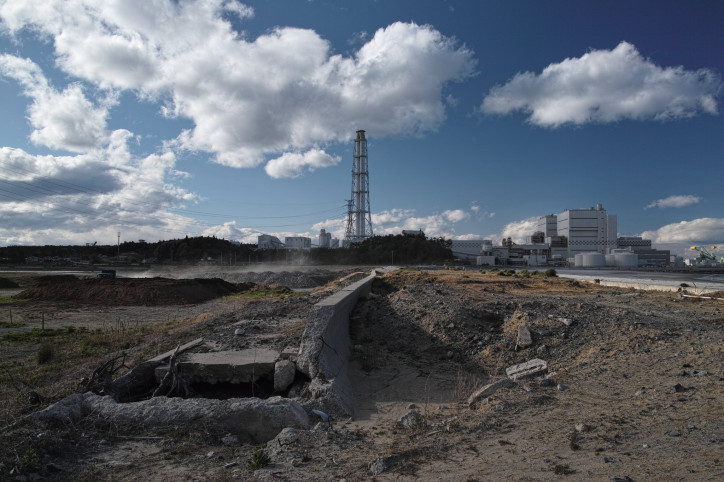
Fukushima Daiichi, 2013 r., zdjęcie: Jun Teramoto/Flickr (CC BY 2.0)
One of the biggest problems at Fukushima Daiichi is the contaminated water. To make sure that the groundwater doesn’t flow through the melted cores and out into the ocean, the soil surrounding the reactors was frozen, among other things, to create a wall of ice. Although they did manage to decrease the flow of ground water, they still have the issue of the water used to cool the melted fuel. A system to purify it was built at the power plant. According to TEPCO, the level of radioactive caesium and strontium is reduced to levels deemed acceptable by the government as a result. But the system does not manage to get rid of tritium, or radioactive hydrogen. That’s why the water is stored in enormous tanks, which are taking up more and more space. There are 1061 of them in 2021, and they hold 1.24 million cubic metres of water. People were already telling me how they were running out of room back in 2015. In 2020, a decision was made to do something about it. The Japanese government declared that in accordance with a council of experts and with the consent of the International Atomic Energy Agency, discharge of the contaminated water into the ocean would begin in 2022.
Even if that would indeed not pose a major threat (tritium is the only naturally occurring radioactive element; nuclear power plants routinely discharge it in low concentrations into the oceans), fishermen from Fukushima are protesting against dumping the contaminated water; they know all too well how that would end. Even more import bans, lowered prices and no possible way to pay off the loans they took out to rebuild after the tsunami.
But the biggest problem, nicely hidden behind the interactive tour of the power plant that we can enjoy on the TEPCO website, are the melted cores. An alarm must be sounded, and loudly at that: the three damaged Fukushima Daiichi reactors contain melted fuel.
It’s still hot, and it’s still radioactive.
According to the initial plan, removal of the melted fuel was supposed to begin in 2021. We now know that this will not happen. The TEPCO website has been publishing successive information posts on delays due to COVID-19 (work on a robot in the UK was interrupted, and more and more employees of the power plant are falling ill).
On 30th December 2020, the Asahi Shimbun wrote about a new measurement conducted by the Nuclear Regulation Authority (NRA). It turns out that in the area of the 12-metre hatches that need to be lifted to access the interior of the core in reactors no. 2 and 3, the radiation level is 10 sieverts per hour.
To kill an adult, all you need is five sieverts.
The head of the NRA, Toyoshi Fuketa was quoted by Asahi as saying: “This will have an enormous effect on the process of decommissioning of the power plant.”
It will probably be delayed by another 10 years. Wouldn’t it be easier to simply give up and pour concrete over it? Yet Japan cannot afford to abandon nuclear power. And that’s why they keep on saying that the situation is under control.
The virus
Just recently, Mr. Teiichi posted a photo on Facebook; he’s wearing black nylon trousers, coats, rubber gloves, a mask and a black hat with a plastic veil. He’s standing in front of his seed shop. Behind him are wooden planks dug out from the remains of the city of Rikuzentakata (1656 fatalities, 223 people missing). He has painted a face on them. The pupils of the eyes are stars, and tears are flowing from them. Mr. Teiichi added an inscription above the face: “I sow the seeds of hope in the heart.”
I remember that face from my visit in 2015, when Mr. Teiichi’s shop was located lower, closer to the sea, in the threatened area. In the exact same place it had been before the tsunami. Instead of a city, he was surrounded by a construction site. A lonely pine tree can be seen in the background; the only surviving tree from the 70,000 pines which were growing in the forest along the coast.
I spoke with Teiichi about his book The Seed of Hope in the Heart. He wrote it in English, although he doesn’t know any English. A foreign language helped him tame untameable words. A foreign language helped him try to understand the catastrophe.
The tsunami became his obsession. He read about past tsunamis in the archives, measured tree stumps and calculated their age. Salt water kills tree roots; if trees were still standing although they were older than the largest tsunamis, this meant that the wave didn’t reach them.
A few years after we met, Mr. Teiichi moved to higher ground. He writes: “Now I’m living 30 metres above sea level. This place is most probably safe.”
Mr. Teiichi does not stop editing his book. He sent me the fifth edition in 2017. In the introduction, he wrote: “As long as I have the seed of hope in my heart, I can live anywhere. I am sure other people have the same. No matter what comes up, no matter how hard it gets along the way, we have to move forward for the future. For this reason, even if your hometown has been utterly destroyed […] even if you have lost everything, have strong souls, look up at the sky, and move forward. Then, you really sow the seed of hope in your heart. Eventually, you can reap happiness.”
He added a note to the photo in his COVID uniform: “The seed shop is fully armed today! I can’t become infected and I can’t infect you. Do I look funny? I sell seeds of laughter.”
In Japan, 6557 people died of the virus. And 408,000 got infected. A public health state of emergency is in place in the country. An increased number of suicides was recorded for the first time in 10 years. 20,919 people committed suicide in 2020; during this time, 3459 died from COVID-19. Suicides among women went up significantly: from 885 in 2019 to 6976. Alex Martin wrote about these statistics for The Japan Times. He tells the story of a woman who committed suicide on 15th January 2021. She left the following note: “I am sorry for the problems I caused.” The woman and her daughter went through a gentle version of the virus. She was beginning to worry that she had infected her daughter, and that she could have infected somebody in school.
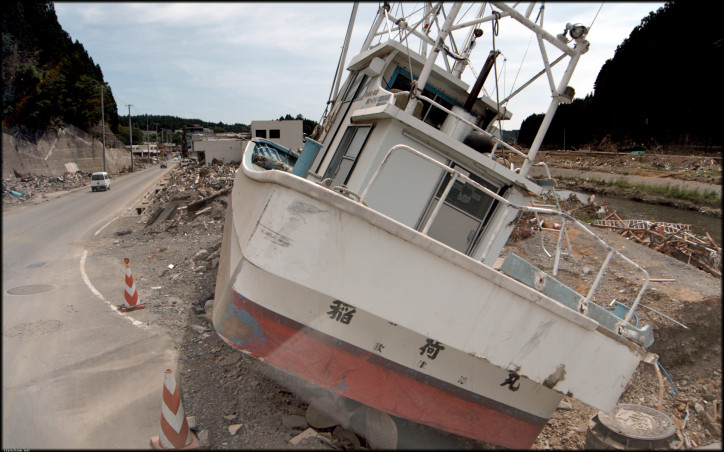
Tōhoku, 2011 r., zdjęcie: Stan Chow/Flickr (CC BY 2.0)
A new catastrophe is beginning. Maybe the people who survived the one in 2011 could teach us something? They know how to cope with the trauma.
Kenta is taking action.
The monk Kaneta is listening.
Mr. Teiichi is writing.
Yasuo Takamatsu is diving.
Grandma Abe is producing local delicacies.
Mr. Sasaki is talking over the phone with the dead.
Hiroki Terai is teaching people to cry.
The monk Urakami is teaching people to die.
They are all teaching us how to live a fuller life.
“There is something that links Fukushima with COVID-19,” Kaneta writes to me; he thinks that the meltdown of the three reactors was a warning. Just like the virus. “I believe that somebody or something is asking us what our values and priorities are. It is telling us to think about the civilization we are living in. And the lifestyle we’ve chosen. Globalization, the concentration of people in large urban clusters, has ruined political systems (especially in Japan). I feel like the Earth is falling, sliding to the bottom.”
How many more warnings will we need?
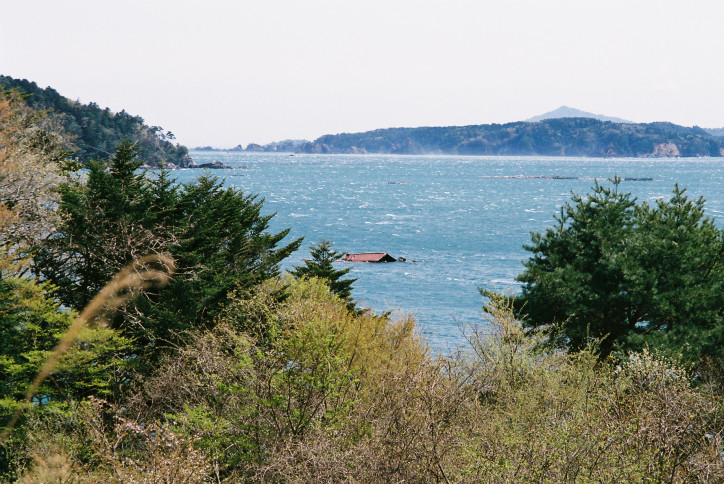
Tōhoku, 2011. Photo by Akinori Yamada/Flickr (CC BY 2.0)
Author’s note: After publication, I came across a piece of information published by “The Guardian” which stated that on 17th February 2021 remains of the body of 61-year-old Natsuko Okuyama from Higashimatsushima in the Miyagi Prefecture were found. Natsuko vanished 10 years ago in the aftermath of the tsunami.
I wish to thank Eri Kawai Kobayashi and Tatsuya Yabuuchi for their help in preparing this article and the conversations with the protagonists.
Translated from the Polish by Mark Ordon


